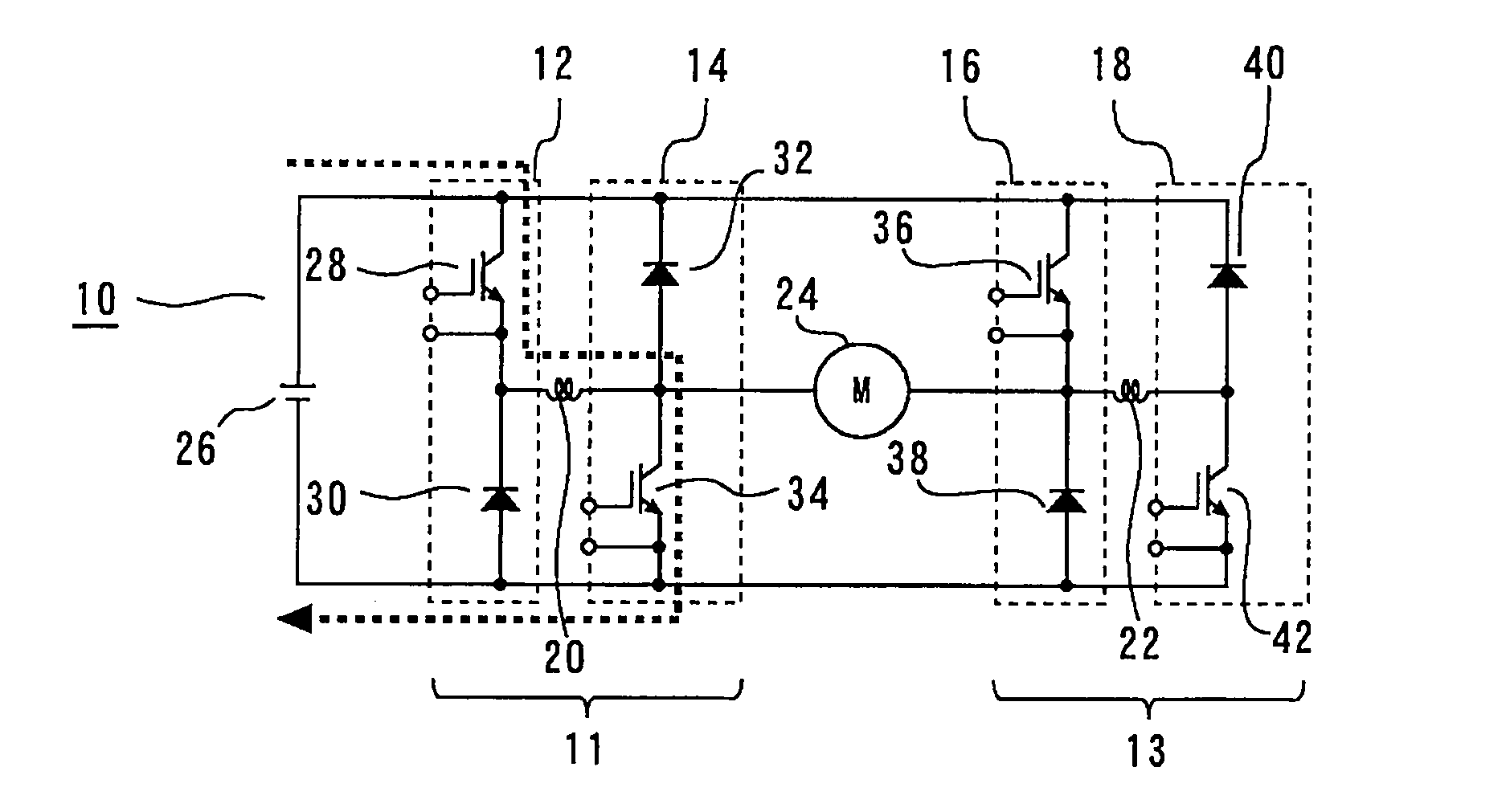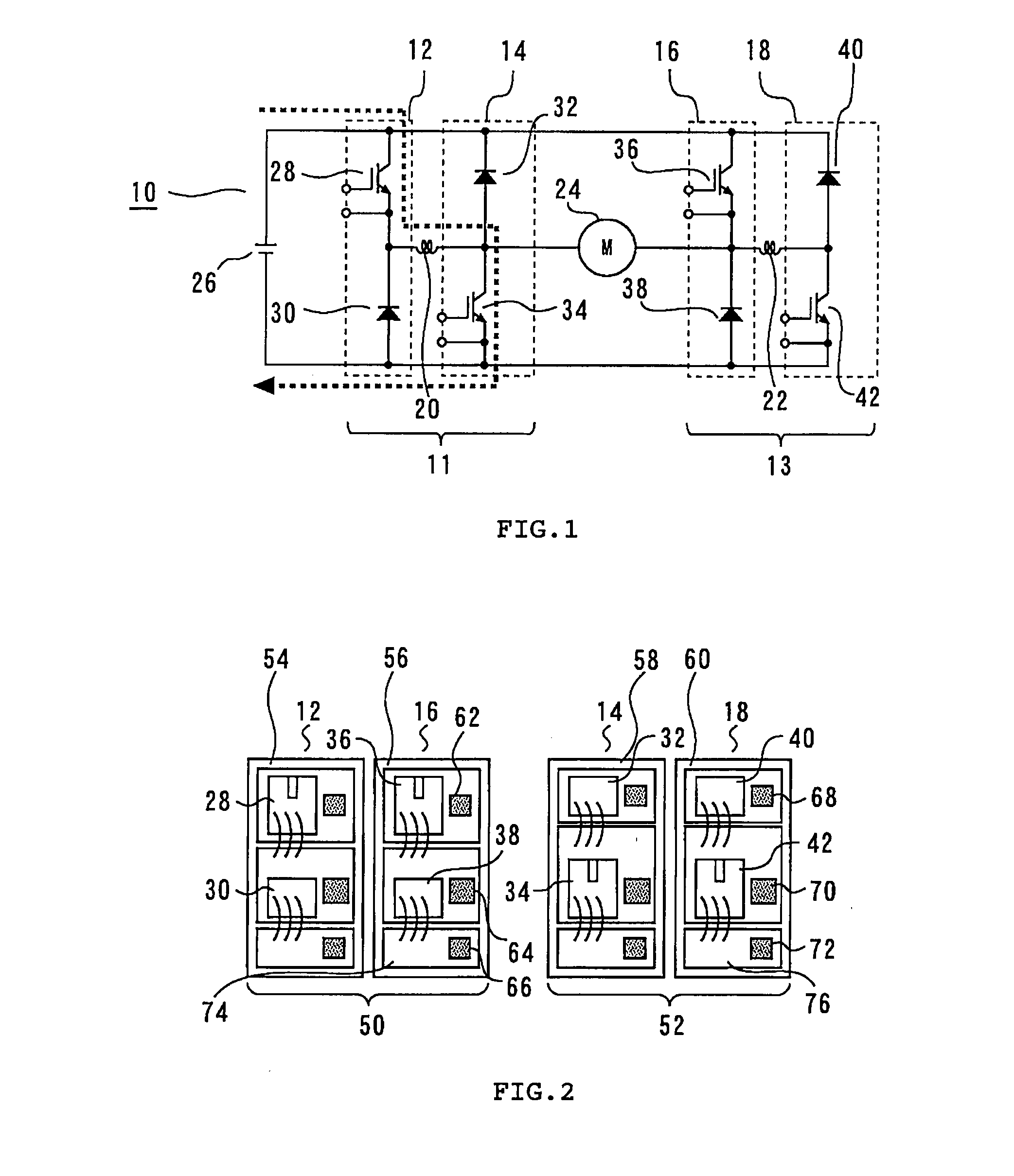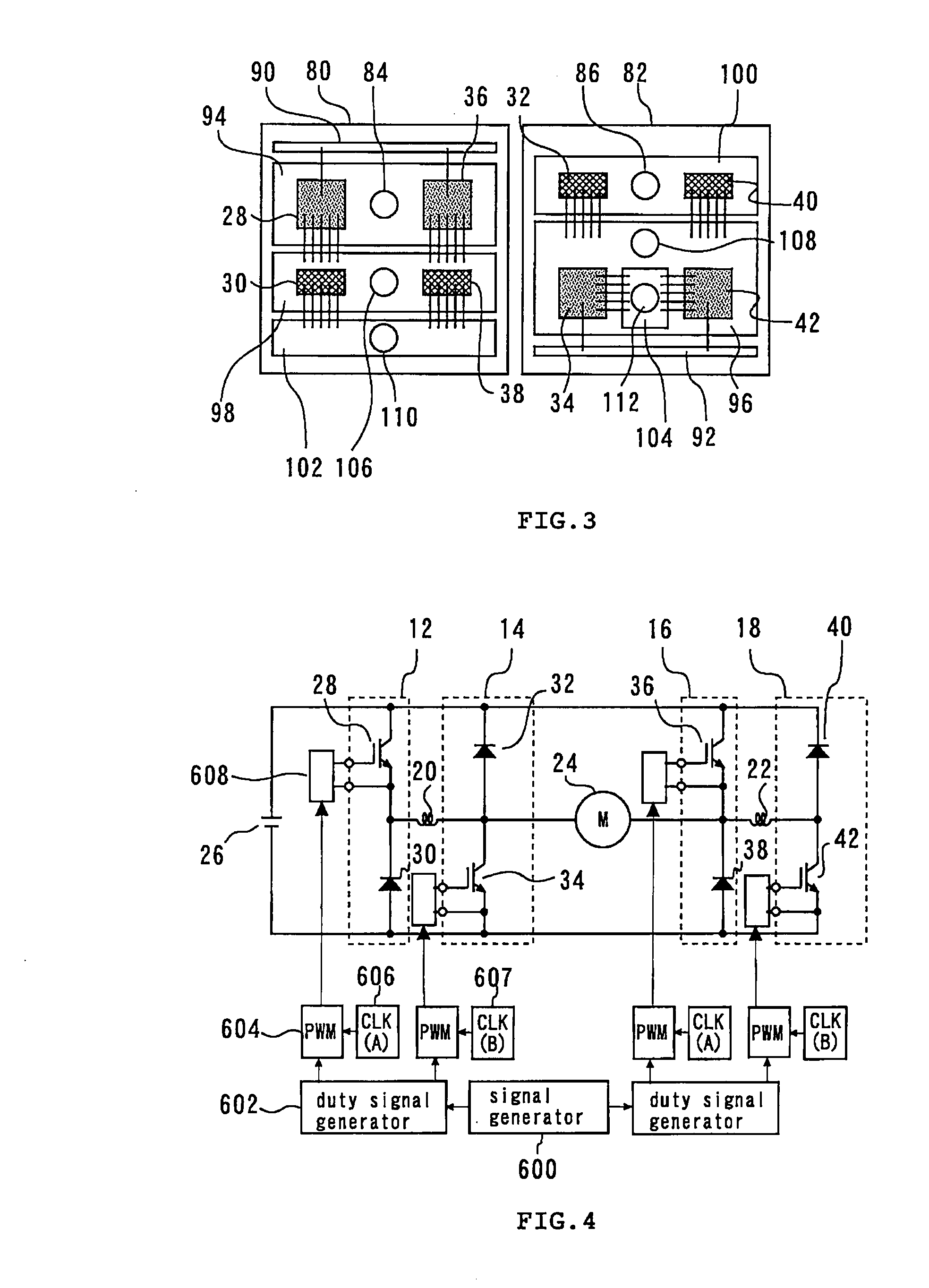Semiconductor switching device
a switching device and semiconductor technology, applied in electronic switching, pulse technique, instruments, etc., can solve the problems of ensuring safe shut off, shutting off switching elements, and serious problems such as arm short circuits, and achieve the effect of suppressing the damage to switching elements due to arm short circuits and large curren
- Summary
- Abstract
- Description
- Claims
- Application Information
AI Technical Summary
Benefits of technology
Problems solved by technology
Method used
Image
Examples
first embodiment
[0027]The first embodiment of the present invention will now be described with reference to FIGS. 1 to 3. Like materials and elements are designated by the same reference numerals and may not be redundantly described. This is also true for the other embodiments of the present invention.
[0028]FIG. 1 is a circuit diagram of a semiconductor switching device according to the first embodiment. A first power control part 11 and a second power control part 13 are provided with the semiconductor switching device 10. The first power control part 11 and the second power control part 13 are a half bridge circuit, respectively. Further, the first power control part 11 and the second power control part 13 are connected to a load 24 that is subject to control. The load 24 of the present embodiment may be made of, but is not limited to, a motor. The load 24 is connected to a DC source 26 via the semiconductor switching device 10 that consists of the first power control part 11 and the second power...
second embodiment
[0062]The second embodiment will now be described with reference to FIGS. 6 and 7. FIG. 6 is explained firstly. Although a Semiconductor switching device shown in FIG. 6 is almost identical to the semiconductor switching device shown in FIG. 1, there is a difference in a semiconductor element. Namely, a first switching element 208, a second switching element 212, a third switching element 216 and a fourth switching element 220 are composed of a power MOSFET, respectively in this embodiment. Here, parasitic diodes 210, 214, 218 and 222 connected parallelly and inversely to each of the switching elements are shown only for the purpose of explaining the reverse conduction of the power MOSFET. Therefore, the parasitic diodes are not independently arranged actually.
[0063]Here, the operation of the semiconductor switching device will be described. First of all, the first switching element 208 and the fourth switching element 220 are set in the ON state so as to execute the PWM control of ...
third embodiment
[0067]The third embodiment will now be described with reference to FIGS. 8 and 9. FIG. 8 is explained firstly.
[0068]Although a semiconductor switching device shown in FIG. 8 is almost identical to the semiconductor switching device shown in FIG. 1, they differs in that diodes 608, 610, 612 and 614 connected parallelly and inversely to each of the switching elements are provided to FIG. 8. Here, a reverse recovery charge in diode 608 connected parallelly and inversely to the first switching element 28 is lower than a reverse recovery charge in the second diode 32. This relationship is also true for the reverse recovery charge in diode 610 and the first diode 30, the diode 612 and the fourth diode 40 as well as the diode 614 and the third diode 38.
[0069]Here, a backward voltage might be momentarily applied to the switching element because of the floating impedance of the circuit wiring. However, in this embodiment, the above mentioned backward voltage, that might be momentarily applie...
PUM
 Login to View More
Login to View More Abstract
Description
Claims
Application Information
 Login to View More
Login to View More - R&D
- Intellectual Property
- Life Sciences
- Materials
- Tech Scout
- Unparalleled Data Quality
- Higher Quality Content
- 60% Fewer Hallucinations
Browse by: Latest US Patents, China's latest patents, Technical Efficacy Thesaurus, Application Domain, Technology Topic, Popular Technical Reports.
© 2025 PatSnap. All rights reserved.Legal|Privacy policy|Modern Slavery Act Transparency Statement|Sitemap|About US| Contact US: help@patsnap.com



